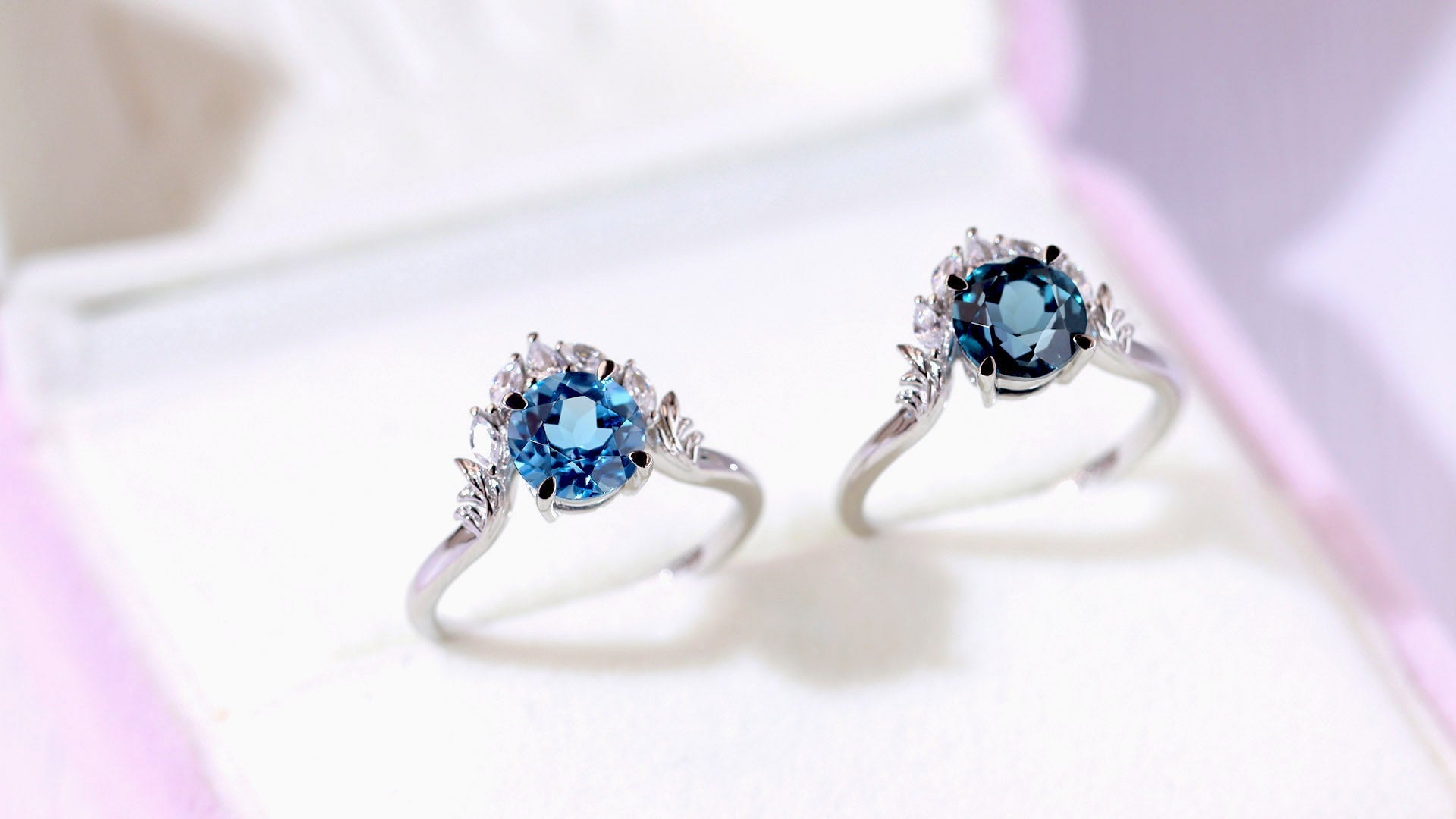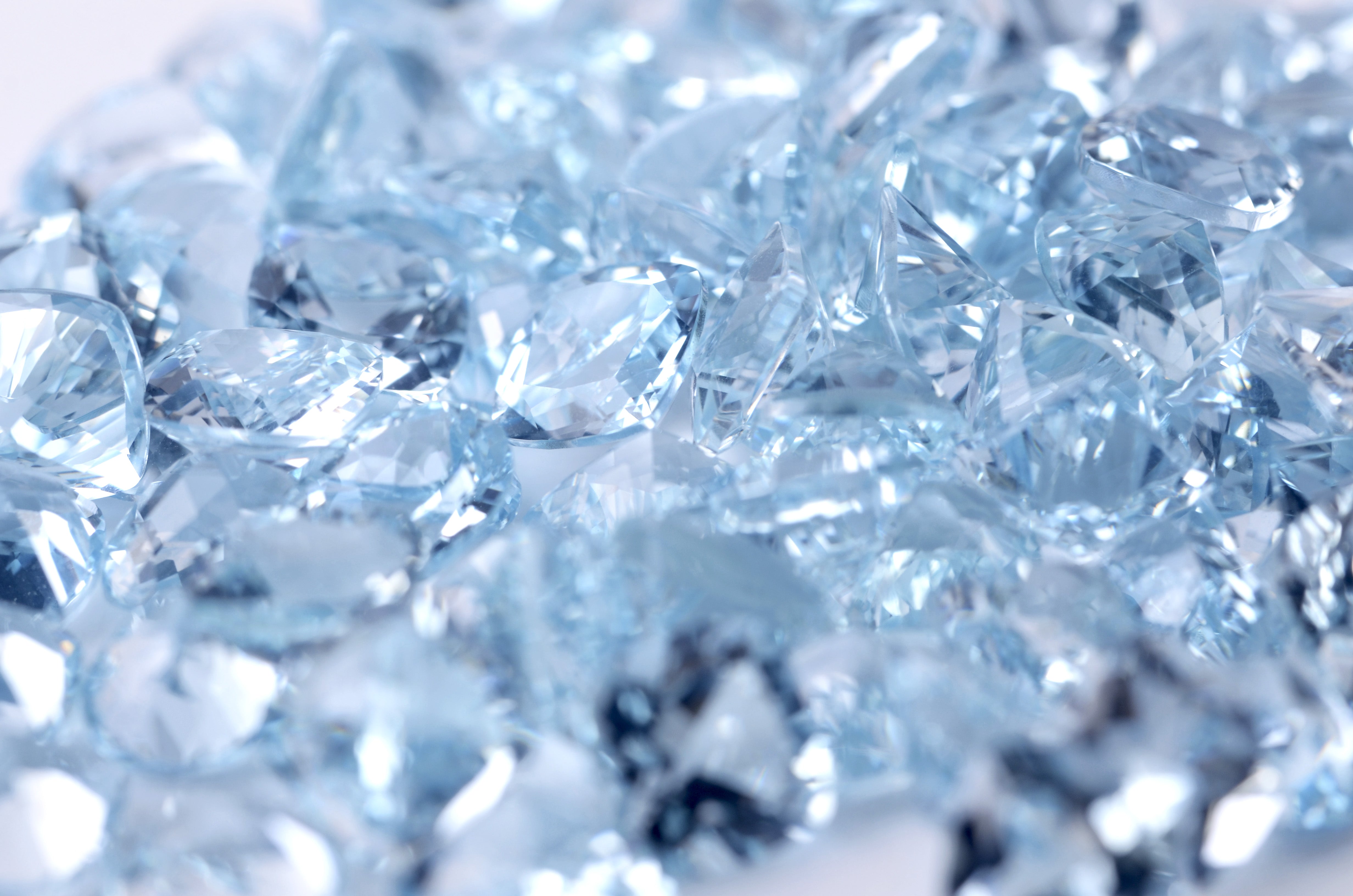
The Most Comprehensive Guide to Alexandrite
Attributing to the beauty and rarity, gemstones have always attracted the gaze and ardor. Among various precious stones, Alexandrite stands out for its unique property of changing color, a trait that has made it a coveted treasure since its discovery. In this blog, we will delve into the history, properties, symbolism, and benefits of Alexandrite, as well as the budget-friendly options for those who seek gemstone without spending a fortune.
Historical Origins of Alexandrite

In the 1830s, a story shrouded in mystery began to unfold in the Ural Mountains. Finnish mineralogist Nils Gustaf Nordenskiöld examined the samples collected from the Uralian mine near Yekaterinburg. Due to the lush green hue, he initially mistook the stone for an Emerald. However, under the soft glow of candlelight, the stone transformed into a raspberry red, which is the phenomenon that led Nordenskiöld to propose the name "diaphanite" for it.
Soon after, the Russian mine manager, Count Lev Alekseevich Perovskii, who had provided Nordenskiöld with the samples, presented the stone to the future Czar, Alexander II on his 16th birthday. At this point, he named the gemstone "Alexandrite", allegedly in an attempt to ingratiate himself with the royal family. This tale is the most widely circulated narrative regarding the origin of Alexandrite, although numerous versions exist. While we may never ascertain the absolute truth, one thing is certain: this mysterious gem carries a profound history and abundant cultural significance.
Despite the enigmatic origins, Alexandrite's allure quickly captivated the world and gradually stood for the royalty and prestige of Russia. From a disputed discovery to a global sensation, Alexandrite's enduring charm and mystique continue to this day.
Main Properties: Color Changing
As a fascinating variety of chrysoberyl, Alexandrite is celebrated for its extraordinary "Alexandrite Effect", which is a type of optical phenomenon characterized by its color-changing effect. Edwin W. Streeter once described it as the "Emerald by day, Ruby by night", highlighting the gemstone's unique ability. This effect is a result of the gemstone's distinctive chemical composition and crystalline structure, which exhibit different responses under different light conditions. The presence of trace elements in its crystal lattice is responsible for the stone's ability to selectively absorb and reflect light, creating a distinct visual effect.
Under the illumination of natural or fluorescent light, Alexandrite dazzles with hues ranging from vibrant green to bluish-green. However, when exposed to incandescent light, the gem shifts to a warmer hue that ranges from raspberry to purplish-red. This unique property has made Alexandrite a favorite among gem enthusiasts and collectors, who appreciate the dynamic property and captivating scientific phenomena.
Furthermore, the clarity and cut of Alexandrite are paramount. High transparency allows more light to pass through the gem, enhancing the visibility of its color changes, so a higher clarity would contribute to its beauty and appeal. A skillfully executed cut not only accentuates the gem's luminosity but also optimizes the interplay of light, ensuring the full presentation of its color-changing capabilities.
Symbolic Meaning: June Birthstone & 55th Anniversary Gemstone
Prized for its unique color changing, Alexandrite is believed to bring great fortune in interactions, love, strength and romance. Embodying a blend of symbolism as rich and varied as its color shifts, Alexandrite is a gem with various meanings. As the June birthstone, it is believed to bestow wisdom and good luck upon individuals born under the Cancer zodiac. Besides, this "Chameleon Stone" is also the gemstone for the 55th wedding anniversary, representing a love that evolves and endures through the ages.
Red and green, the two main colors of Alexandrite are also steeped in complementary symbolism. Red, symbolizing passion and energy, is complemented by the serene and nurturing qualities of green, embodying a harmonious blend of vitality and renewal. This interaction of colors is not only visual, but is also believed to hold spiritual significance across various cultures.
Furthermore, Alexandrite encourages romance and is believed to infuse joy into lives limited by rigid self-discipline. It acts as a beacon of hope for the despairing and a source of strength for the needy, reminding us of the significance and preciousness of life.
Alexandrite Benefits: From Physical to Emotional
Alexandrite is prized not only for its beauty but also for its potential to positively impact physical health. It is traditionally believed to support the endocrine system, which in turn may bolster the immune system. Some healing practitioners also pointed out its utility in mending the pancreas, spleen, and neurological tissues. These associations suggest that Alexandrite could contribute to a sense of well-being and harmony within the body.
As for emotional health, Alexandrite is considered as a healing stone that can foster a sense of calm and peace. It is said to channel positive energy, which helps to relieve stress and promote emotional stability. Alexandrite's green hue is also regarded as a connection between nature and the self, improving self-esteem and deepening understanding of life.
In addition, Alexandrite is believed to facilitate career advancement and support career success. By sharpening our minds, it can boost creativity and intellectual capacity, which is particularly beneficial to professional development. Alexandrite may also inspire professional ambition and determination, contributing to achieving career goals and gaining recognition.
Mining Locations and Price of Natural Alexandrite
After being discovered in the 1830s in Russia's Ural Mountains, the superior-quality Alexandrite came to hit the market. However, the natural mine deposits in Russia are limited and have been gradually exhausted. Until the 1980s, new supplies were discovered in Brazil. Now, Alexandrite is unearthed from diverse locales around the world, including several main sources such as Brazil, Sri Lanka, and East Africa. Though the color of gems from these mines is not as vivid as original Russian gemstones, they are still really expensive and not affordable for the general public because of the limited supply.
As for the market value of earth-mined Alexandrite, it depends on the 4Cs, which are color, clarity, cut, and carat weight. The most significant determinants for Alexandrite are the quality and intensity of its color change, as well as the carat weight of the stone. For example, the retail price for faceted Alexandrite ranges from a few hundred to tens of thousands of dollars per carat. Due to the extremely high price, natural Alexandrite is just a prized gemstone for an exclusive group of collectors.
Synthetic Alexandrite: Differences From Natural Alexandrite
Due to the high price and limited supply of Alexandrite, researchers have cast their eyes on synthetic Alexandrite. Since the 1970s, labs have successfully grown synthetic Alexandrite using the Czochralski method, floating zone method, flux melting process, hydrothermal synthesis, chemical vapor deposition, etc. It is definite that lab-created Alexandrite is different from natural Alexandrite. For example, earth mined Alexandrite is distinguished due to its unique formation process, whereas lab-grown Alexandrite tends to be more uniform and consistent in quality.
However, technically speaking, there's no difference in the composition of natural and synthetic Alexandrites, which explains why they have similar texture, durability, and other properties. Although lab-grown Alexandrite is relatively available, it also commands a significant premium, because creating synthetic Alexandrite is a complex and money-consuming process. Besides, it's also an option favored for environmental protection and ethical concerns, partly due to issues associated with certain mines. Therefore, synthetic gemstones not only broaden the range of available gemstones but also bring into focus important questions about sustainability, ethics, and value.
As technology advances, the distinction between natural and synthetic Alexandrite becomes less apparent, providing consumers with diverse choices for varying preferences and budgets. This shift towards synthetic gems is not just about the stones themselves; it's about the values they represent as well.

LUO Jewelry offers rings, necklaces, and earrings featuring synthetic Alexandrite, which changes color from blue-green to purple, which rivals the properties and quality of natural Alexandrite. We invite you to discover our jewelry collection and find pieces that reflect your distinctive taste. LUO Jewelry takes pride in providing a bespoke experience, ensuring each piece is as unique as the individual who wears it.


